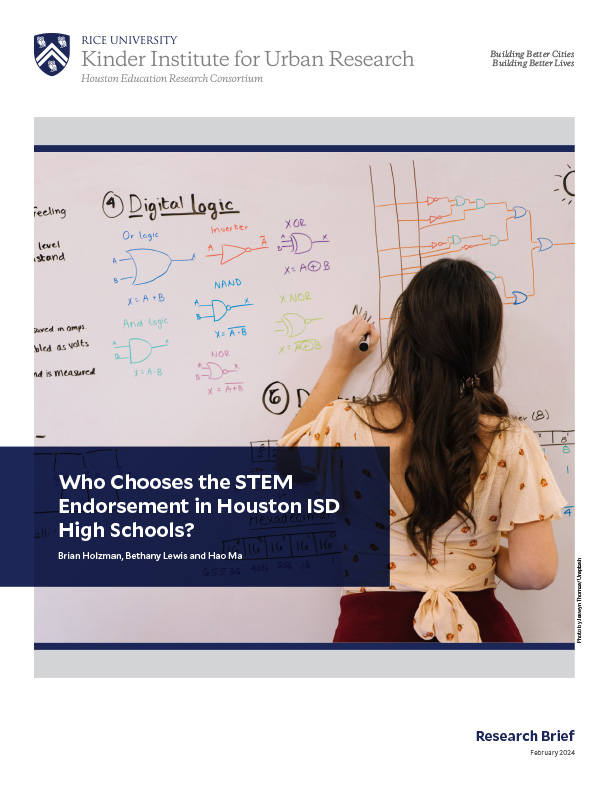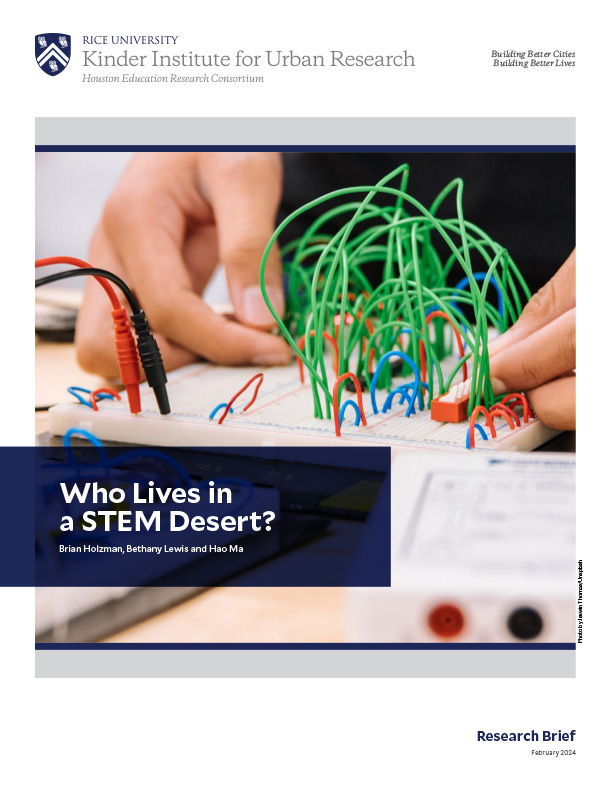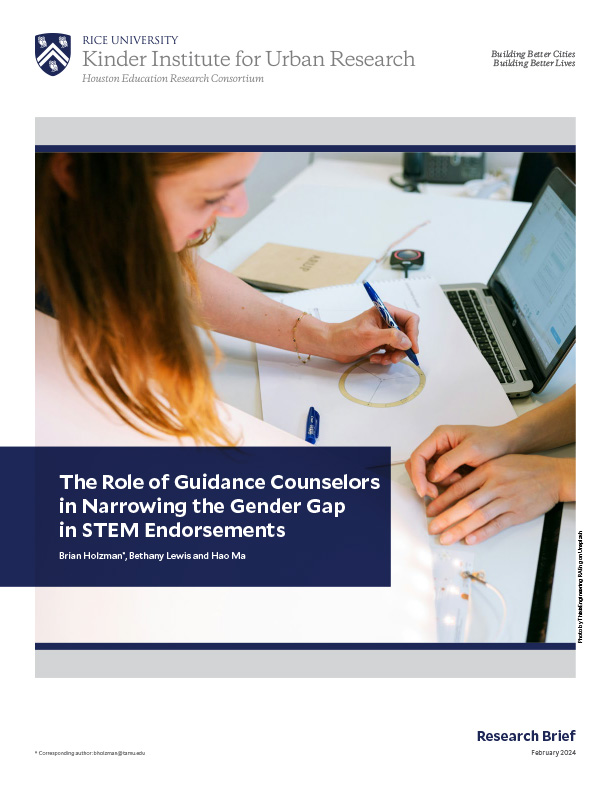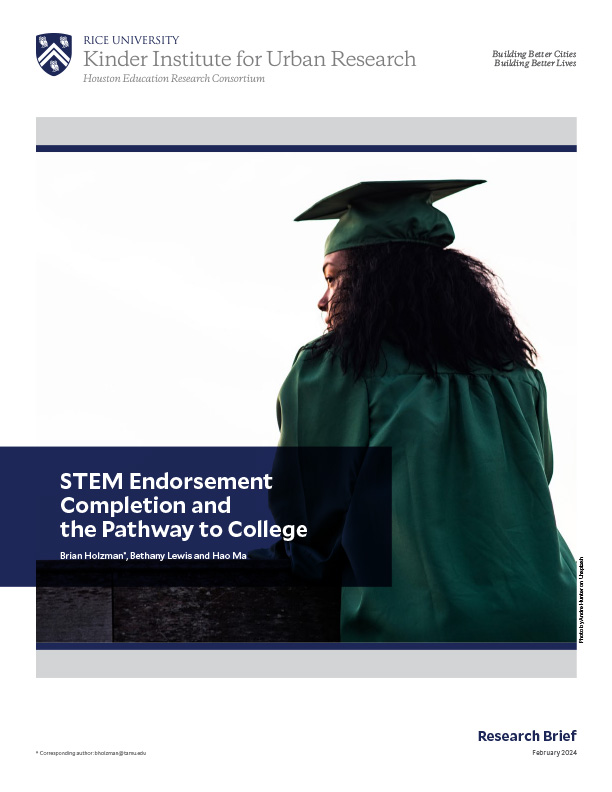House Bill 5, passed by the Texas Legislature in 2013, introduced into the high school graduation framework endorsements, which are like college majors that provide students opportunities to specialize in an area aligned with their long-term professional goals. There are specific course sequences, or paths, students can complete to earn their endorsement. This study focuses on the STEM (science, technology, engineering, and mathematics) endorsement and analyzes the data of Houston ISD students who were freshmen during the 2014–2015 and 2015–2016 school years, the first two cohorts required to choose endorsements under the new high school graduation plan.
Briefs 1 and 2 of this series look at a variety of factors for students in choosing and completing the STEM endorsement, including access, race, gender, and academic achievement. Brief 3 examines whether these patterns changed over time with the introduction of a Personal Graduation Plan (PGP) check-in with a guidance counselor. Brief 4 analyzes whether endorsement completion predicted college enrollment.
Key findings
- Upon high school entry, male students, Asian and Pacific Islander students, and students with higher scores on the eighth-grade State of Texas Assessments of Academic Readiness (STARR) science test were more likely to choose the STEM endorsement.
- Black students, students who did not speak English at home and students living in lower socioeconomic neighborhoods were more likely to live in a STEM desert, an area with limited access to STEM endorsement paths or course offerings.
- Requiring a personal graduation plan check-in with a high school guidance counselor was associated with higher rates of STEM endorsement completion for female students who chose the STEM pathway in ninth grade, especially those from less privileged backgrounds.
- Students who completed the STEM endorsement were more likely to be male, be enrolled in STEM magnet programs, and have high cumulative high school GPAs. While the STEM endorsement was positively associated with college choice, the association was largely explained by academic performance measures, including SAT scores and cumulative high school GPA.







